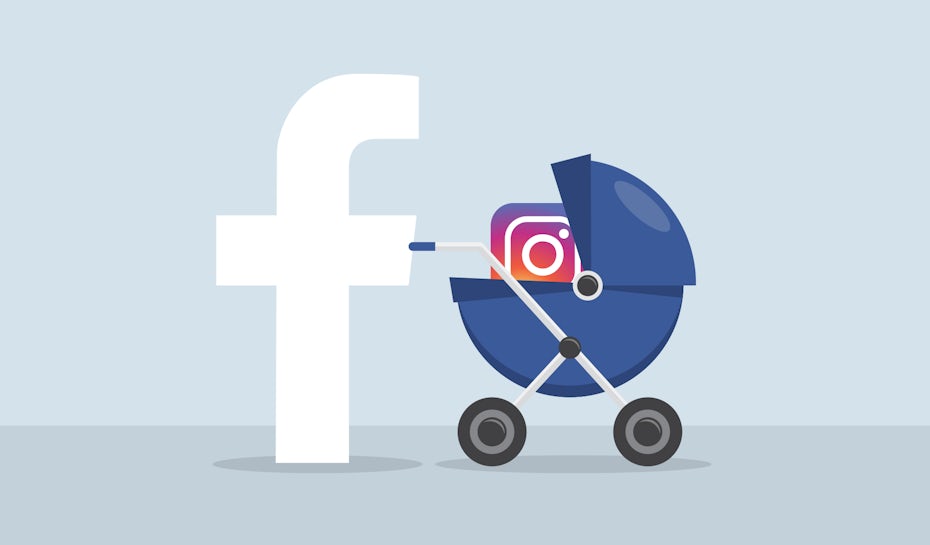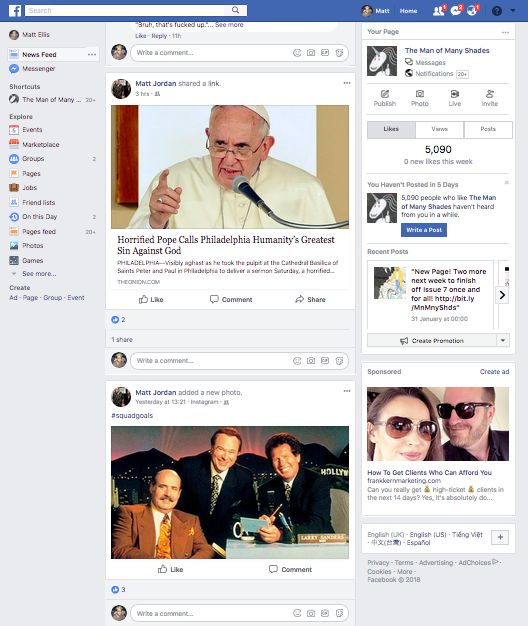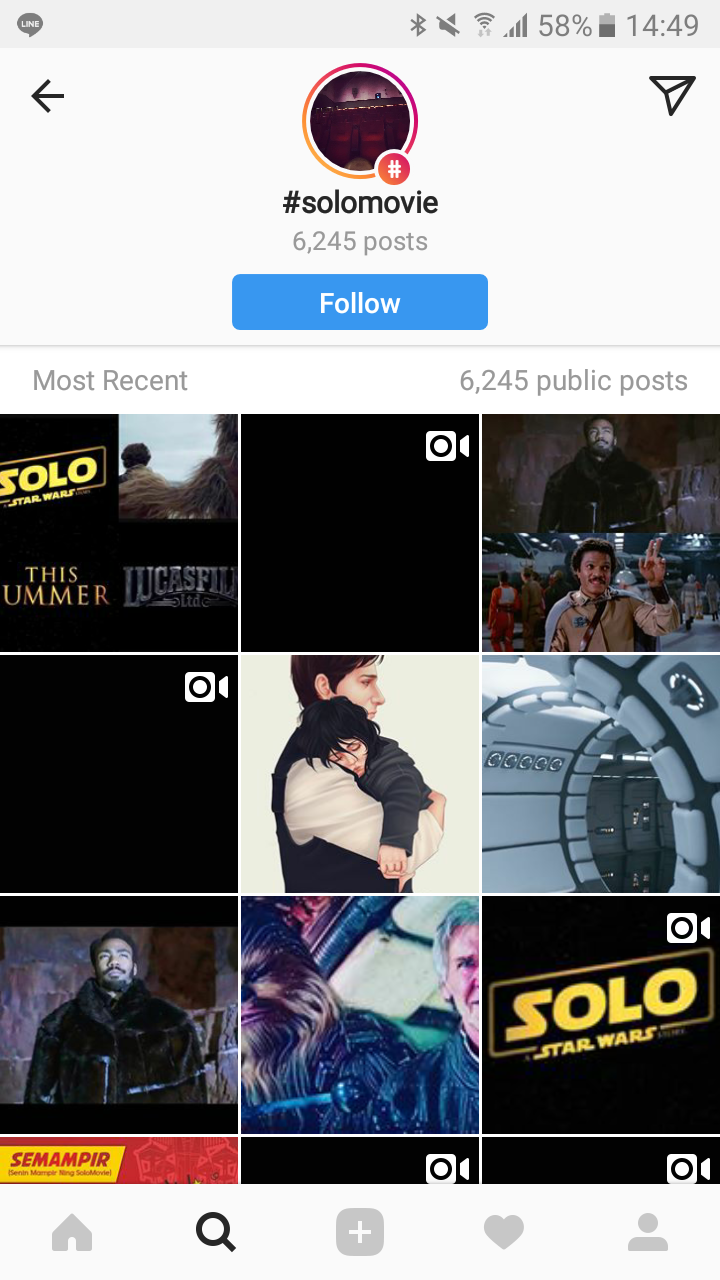How To Create A Fashion Blog On Facebook
When Facebook bought Instagram in 2012, were they preparing to train a successor?
Back then, the billion-dollar acquisition was a bold move, and many criticized Facebook for spending so much on a dinky photo app run by just 13 employees. No one questions the move now, however; although exact amounts are unknown, rough estimates put Instagram's current value at around $102 billion, ten times the acquisition cost.

To be fair, Instagram can't compete with Facebook on the sheer number of users. Instagram's 800 million monthly users may have made it the third most popular social media channel, but it's still a far cry from reigning-champion Facebook's 2 billion monthly users. So why not invest all your digital marketing money in Facebook and reach twice as many people?
We've just sent you your first lesson.
Because, as we explain below, it's not about the quantity of impressions, it's about the quality. And for digital brands targeting younger (< 30 y.o.) groups, your marketing dollars might go further on Instagram, especially for visual industries like fashion, beauty, or even architecture.
Later, we'll explain how to shift your strategies to make the most out of marketing on both platforms. But first, let's look at how a relatively smaller channel can make bigger waves. It's all about their DNA, which for social media is another way to say, their algorithms.
Instagram vs. Facebook: the algorithms
—
Long story short, it's not about your visibility per se, but more about your visibility with the right people.
Getting back to basics for a moment, the algorithm for a social media feed refers to the actual code that determines which posts are seen by which users, and in what order. Long gone are the days of chronological feeds where posts appear in the order they were published—and good riddance, frankly, considering this organization structure doesn't scale well when you follow hundreds of accounts.

So, social media channels use algorithms to give you a more fulfilling experience, where you see more posts you actually like, and less of the irrelevant ones from your weird aunt. But don't pat these channels on the back for their altruism—the algorithm also gives them more control over their advertising ventures.
As you can imagine, this isn't an exact science, so each social media channel has to shoot in the dark a little when determining the right criteria on which to organize their feeds. Therein lies the difference between marketing on Facebook versus marketing on Instagram.
So what does Instagram's algorithm do better for marketing? The actual algorithms are unknown trade secrets, but Alfred Lua of Buffer researched both the algorithms for Facebook and Instagram, and came up with some speculations that proved accurate when tested. These are the factors that determine a single (non-advertisement) post's rank.
Instagram's Algorithm
- Engagement. How many hearts and comments on each post.
- Relevancy. Are the post's genres relevant to the user?
- Relationships. Posts from accounts that the user interacts with more frequently are ranked higher.
- Timeliness. More recent posts are ranked higher.
- Profile searches. Posts from accounts that users search for regularly are ranked higher.
- Direct shares. Posts from accounts the user directly shares with others are ranked higher, and the person who receives the shared posts gets a rank boost on their own posts.
- Time spent on post. The time spent actually looking at a post (not scrolling).
Facebook's new algorithm
- Friends and family. Posts from people the user knows personally are ranked higher. This is important because it means posts from brands are demoted .
- Engagement. How many likes, comments and shares the post receives, factoring in time.
- Encouraging engagement. Posts likely to start to a conversation are ranked higher.
- Images and videos. Visual posts are ranked higher and text-only posts are ranked lower.
- Bait is demoted. Posts that aggressively bait for likes, shares, comments, votes or tags are ranked lower.
- Promotional posts are demoted. Posts trying to push people into buying a product/service or join a contest are demoted. Also, Facebook checks text against known advertisements and demotes unofficial ads.

The goal of the update was to prevent fraudulent news stories by encouraging more personal conversations, but the consequence is less exposure to brands and public content.
It seems like a coordinated strategy with Facebook compartmentalizing its two channels. Minimizing third-party exposure on Facebook will return the channel to its more personal social roots with friends and family, while simultaneously drumming up business for its advertising (it's not harder for brand posts to be seen for free). But social media marketers can still promote their brand on Instagram for free, and with even better results, as long as the content is sound.
Instagram vs. Facebook: marketing effectiveness
—
Now that we've looked behind the scenes, let's look at what's happening on the main stage.
To wrap a nice bow around it, Instagram is better for direct marketing: engaging with customers, spreading awareness, showcasing new products/services, comparison shopping, and influencer marketing. Furthermore, Instagram is a powerhouse for the under 30 demographic, especially teens.
Facebook, on the other hand, remains the best for visibility with older age groups, as long as you're using paid advertisements. It's also worth noting Facebook makes it easier to funnel users to a third-party site like an online store. Instagram prohibits link sharing in posts and comments, and any outside links appear in your bio only; the extra steps required to visit your site make it harder to generate traffic.

A lot of it boils down to the motives of each person using each site. In principle, Facebook tries to be more about personal interactions and sharing content with people you know. As such, 40% of Facebook users don't like engaging with companies at all, preferring more intimate connections.
Instagram, though, places more emphasis on discovery and observation, and less on interaction—although ironically their engagement rate is much higher. Particularly for Millennials, Instagram is seen as a style resource, an ideal place for learning new trends and discovering new artists, as well as keeping up with their favorite celebrities. As you can see by the chart below, Instagram dominates industries like fashion, beauty, interior design, architecture, photography and celebrity news.

This makes Instagram better for influencer marketing and free exposure; users on Instagram more often sign on actively looking for product recommendations, as opposed to Facebook where they actively ignore them.
Instagram's other advantage is customer engagement. A 2014 Forrester study put Facebook's engagement rate at 0.7%, a huge lag behind Instagram's 4.21%. A Selfstartr study brings more up-to-date statistics: Only 32% of Facebook users regularly interact with brands, compared to 68% of Instagram users. Their final tally cites that brands receive 58x more engagement per follower on Instagram than Facebook.
A lot of that has to do with Facebook followers not even seeing the posts in the first place, thanks to the algorithm. According to the above Selfstartr report, while Instragram brands reach 100% of their audience per post, that number drops drastically to 6% for Facebook.
Maybe it's the mindset on users, or perhaps the limitations Facebook's new algorithm puts on brands, or maybe it's simply the culture of each channel. Regardless, Instagram is the winner for having an actual back-and-forth with customers.
We've just sent you your first lesson.
And let's not forget the presence of competition, or lack-there-of. The presence of marketers on Facebook is nearly 3x that of Instagram: 93% of marketers use Facebook, compared to only 36% using Instagram [Selfstartr again]. Perhaps that has to do with the brand fatigue felt on Facebook.
But perhaps the difference between marketing on Facebook vs. Instagram is best understand by looking at performance over time. Organic marketing on Facebook has declined by 63% since 2012, while it's increased 115% on Instagram in that same time. It seems the writing has been on the wall even before Facebook's latest algorithm changes.
7 best practices for switching your marketing focus
—
Enough statistics and observations. Let's talk about what a brand can do to maximize the effect of Instagram marketing.
1. Don't abandon facebook. With its reach and emphasis on sharing, Facebook is still relevant for marketers, so don't abandon it completely. Facebook is a great place to post curated content and brand news, and their paid advertising is more effective than Instagram's (feel free to download Oberlo's comprehensive guide to explore Facebook Advertising). But when it comes down to building a brand reputation and relationships with customers, Instagram is better.
2. Up the visual content. While visuals outperform text on both channels, on Instagram it's downright necessary. Facebook may be more forgiving of text-based posts like blog articles or novella-length status updates, but with Instagram, if has to look great to perform great.
3. Create original content. Again, posting or sharing other works is perfectly acceptable on Facebook, but with Instagram it's assumed that images are original. Instagram is less a place for sharing the work of other people (unless it's a picture you took yourself of another person's work), so invest in strong, original content.
4. Go heavy on the hashtags. You can't directly target user groups on Instagram, but hashtags are the next best thing. List all the relevant hashtags to help your post get seen by the right people. Up to 30 hashtags fit in the description, but you can always add more in a comment on your own post.
5. Create contests. Contests are always great for engagement spikes, so take advantage with an Instagram photo contest. Having users promote your brand in their pictures is free advertising, just don't forget to create an original hashtag for the campaign. You also have the opportunity to participate in other universal trends, like the #lemondancechallenge below.
6. Work with consistent themes. Niche targeting is big on Instagram (another reason hashtags are important), so pick a dedicated theme and stick to it. If you're a travel brand, only post travel images. If you're a restaurant, only post food porn. The more you specialize, the better (as long as there's enough interest), so as soon as you find your niche, dive deep.
7. Optimize your bio and description. As the only places to talk about yourself, your Instagram bio and description are vital. In addition to your site URL, you should include a slogan and brief elevator pitch, as well as your most relevant hashtags. Don't shy away from using your logo as your profile photo, either.

Takeaway: the dual strategy
—
Rather than dumping all your eggs from one basket to another, it's best to use both Facebook and Instagram simultaneously and play on their individual strengths.
Facebook's paid advertising is still quite effective, and it's able to reach older groups than Instagram. Facebook is also a better gateway to external sites or online stores because you can post links to anywhere.
But when it comes to direct customer engagement and building your brand identity, Instagram is the clear winner (based on the data). It's also more direct access to the under 30 crowds, and with less competition.
If the trends continue, Instagram will overtake Facebook in advertising in the near future, and maybe even in the amount of users as well. But for the time being, Facebook is still relevant for marketing. Don't abandon Facebook just yet—but keep an eye on the horizon by developing your Instagram presence.
Need a great social media page to market your business?
Our designers will have you #trending in no time!
How To Create A Fashion Blog On Facebook
Source: https://99designs.com/blog/business/instagram-vs-facebook-marketing/
Posted by: munsonthadine.blogspot.com

0 Response to "How To Create A Fashion Blog On Facebook"
Post a Comment